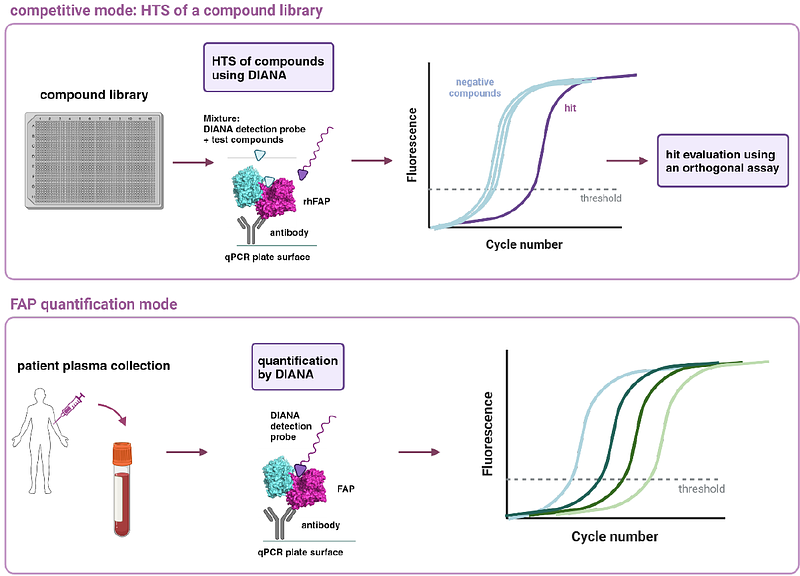Sensitive quantification of fibroblast activation protein and high-throughput screening for inhibition by FDA-approved compounds

Sensitive quantification of fibroblast activation protein and high-throughput screening for inhibition by FDA-approved compounds
Cermakova, K.; Simkova, A.; Wichterle, F.; Krystufek, R.; Stanurova, J.; Busek, P.; Konvalinka, J.; Sacha, P.
AbstractFibroblast activation protein (FAP) has been extensively studied as a cancer biomarker for decades. Recently, small-molecule FAP inhibitors have been widely adopted as a targeting moiety of experimental theranostic radiotracers. Here we present a fast qPCR-based analytical method allowing FAP inhibition screening in a high-throughput regime. In order to identify clinically relevant compounds that might interfere with FAP-targeted approaches, we focused on the library of FDA-approved drugs. Using the DNA-linked Inhibitor Antibody Assay (DIANA), we tested a library of 2,667 compounds within just few hours and identified numerous FDA-approved drugs as novel FAP inhibitors. Notably, prodrugs of cephalosporin antibiotics, reverse-transcriptase inhibitors, and one elastase inhibitor were the most potent FAP inhibitors in our dataset. In addition, by employing FAP DIANA in quantification mode, we were able to determine FAP concentrations in human plasma samples. Together, our work expands the repertoire of FAP inhibitors, underscores the potential interference of co-administered drugs with FAP-targeting strategies, and presents a sensitive and low-consumption ELISA alternative for FAP quantification with a detection limit of 50 pg/ml.


